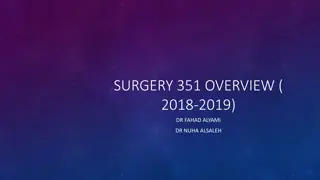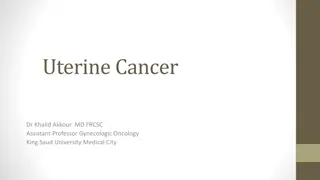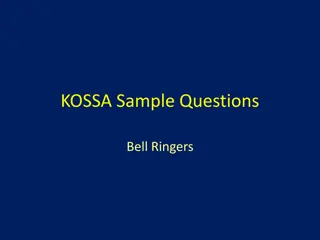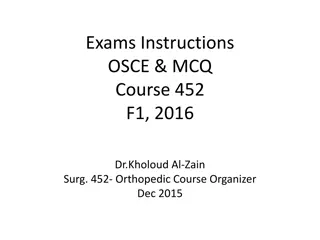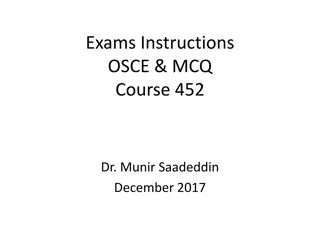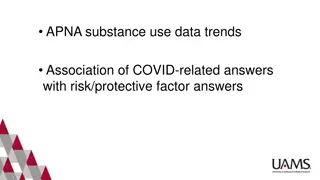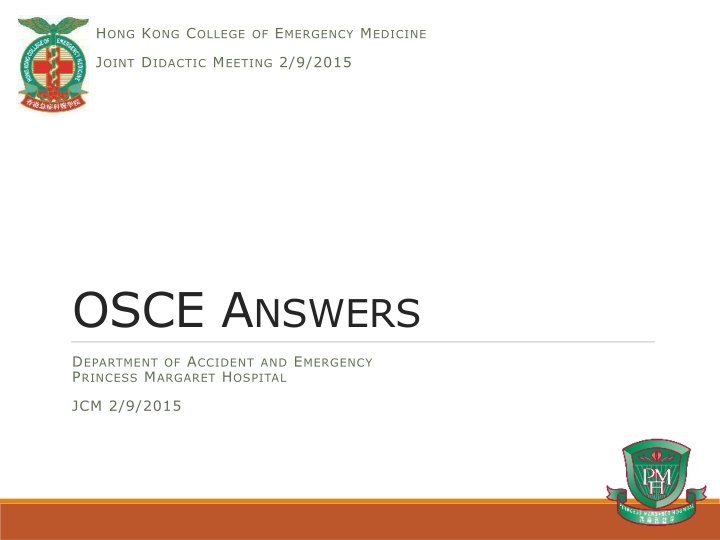
Emergency Radiology Case Study: Retropharyngeal Gas Abnormality
Explore a clinical case of a 71-year-old lady with throat pain post-fish bone ingestion. Learn about the abnormality, clinical signs, causes, investigations, CT findings, and potential complications related to retropharyngeal gas. Get detailed insights into the diagnosis and management.
Download Presentation

Please find below an Image/Link to download the presentation.
The content on the website is provided AS IS for your information and personal use only. It may not be sold, licensed, or shared on other websites without obtaining consent from the author. If you encounter any issues during the download, it is possible that the publisher has removed the file from their server.
You are allowed to download the files provided on this website for personal or commercial use, subject to the condition that they are used lawfully. All files are the property of their respective owners.
The content on the website is provided AS IS for your information and personal use only. It may not be sold, licensed, or shared on other websites without obtaining consent from the author.
E N D
Presentation Transcript
HONG KONG COLLEGEOF EMERGENCY MEDICINE JOINT DIDACTIC MEETING 2/9/2015 OSCE ANSWERS DEPARTMENT OF ACCIDENT AND EMERGENCY PRINCESS MARGARET HOSPITAL JCM 2/9/2015
Case 1 A 71-year-old lady presented with left sided throat pain after fish bone ingestion. She had attempted self induced vomiting but failed. Afebrile, BP127/66 P79 Throat: congested Chest clear DL: No foreign body seen
Questions 1. What is the abnormality? (1 mark) 2. Name one clinical sign you would look for (1 mark) 3. List two causes for the above condition (2 marks) 4. Name 2 investigations that are helpful (2 marks)
5. What is shown on the CT film? (1 mark) 6. List 3 potential complications. (3 marks)
What is the abnormality? (1 mark) Gas in retropharyngeal space Potential space in neck, bound by Superior: skull base Inferior: fascial layers at T2 Anterior: buccopharyngeal fascia posterior: alar fascia, a poor barrier that separates this space from prevertebral space, which continues into posterior mediastinum
Name one clinical sign you would look for (1 mark) Surgical emphysema in neck
List two causes for the above condition (2 marks) Traumatic Ruptured oesophagus Infection Retropharyngeal abscess Gas in retropharyngeal space can come from Viscus: esophageal rupture, pneumomediastinum, pneumothorax, lung contusion Due to trauma, FB, vomiting Gas forming organisms, polymicrobial with anaerobes and aerobes, infection from Tonsils, pharynx Foreign body Iatrogenic e.g. dental procedures
Name 2 investigations that are helpful (2 marks) CT neck Gastrografin swallow
What is shown on the CT film? (1 mark) Surgical emphysema along pre-vertebral plane extending into superior mediastinum
List 3 potential complications. (3 marks) Airway obstruction Mediastinitis, Pneumonia, Intrathoracic abscesses Osteomyelitis, cranial nerve palsies, epidural abscesses Sepsis Jugular vein thrombosis
Case 2 M/52 Smoker, History of DM, HT Attended AED for vomiting undigested food after dinner Multiple similar episodes No other GI symptoms T36.7C BP 105/83 P105, mild dehydration No pallor, jaundice or palpable cervical lymph nodes No peritoneal signs or definite abdominal masses H stix 5.2
Questions 1. Describe the X-ray finding (1 mark) 2. What is the diagnosis (1 mark) 3. What particular physical sign will you look for? (1 mark) How would you illicit the sign? (1 mark) 4. What are the causes of this condition? (4 marks) 5. Describe the electrolyte disturbances if this condition persists (4 marks) 6. Outline the management in AED and disposition (3 marks)
Describe the X-ray finding (1 mark) Grossly dilated stomach with retained food substances Bowels displaced to periphery especially to right flank Absence of bowel air may also be seen in GOO
What is your diagnosis (1 mark) The clinical picture suggests gastric outlet obstruction
What other physical sign will you look for? (1 mark) How would you illicit the sign? (1 mark) The succussion splash Audible when we shake patient s abdomen, stethoscope may be used to facilitate detection of the splash sound
What are the causes of this condition? (4 marks) Functional (autonomic neuropathy): DM, Parkinson disease (1mark) Mechanical causes can be divided into luminal, mural, extrinsic causes Luminal (1mark for any one) Bezoar stones Gallstone obstruction (Bouveret syndrome) Mural (1mark for any one) Strictures, underlying causes includes peptic ulcers, caustic ingestion, Crohn s disease Tumours (benign or malignant including pancreatic tumours, ampullary cancer) TB Iatrogenic (e.g. slipped gastric banding, strictures from anastomoses) Extrinsic (1mark for any one) Pancreatic pseudocyst Lymphoma, metastasis
Describe the electrolyte disturbances if this condition persists (4 marks) The underlying metabolic disturbance is hypokalemic hypochloremic metabolic alkalosis (3 marks) The patient will also produce paradoxical aciduria (1 mark)
Notes There is loss of HCl via vomiting. It renders the patient hypochloraemic Loss of chloride increases bicarbonate production, together with loss of acid, causes metabolic alkalosis Hypokalemia is secondary to loss from vomiting, and Loss via Na/K exchanger in kidney after K+ ion shifts out from cell due to alkalosis
Notes Paradoxical aciduria is explained by the kidneys prioritize volume preservation by RAA system activation, hence Na exchange with H+, thus further H+ loss (aggravating alkalosis and potassium loss) The urine appears paradoxically acidic in an alkalotic patient.
Outline the management in AED and disposition (3 marks) Fluid replacement with potassium supplementation Fluid resuscitation will allow body correct the alkalosis The stomach should be emptied by gastric tube to prevent further vomiting and aspiration The patient should then be admitted to surgical department for further investigations
Case 3 M/66 longstanding back pain Taxi driver, sprained neck when hit by private car from behind in front of a traffic light in street Exact speed unknown, seat belt on He complained of severe neck pain Physical exam showed severe mid-cervical tenderness 4 limbs power full
Questions 1. Describe the injury (3 marks) 2. Describe the other XR abnormalities (3 marks) 3. What is the management in AED? (3 marks) 4. What further investigation will you perform? (2 marks)
You have obtained the MRI images of this patient 5. Describe the MRI findings (3 marks)
Describe the injury (3 marks) C1 to inferior plate of C7 visible Anterior translocation of C4 and C5 relative to both upper and lower vertebrae Disruption of the calcified anterior longitudinal ligament over C3/4 Possible transverse fracture of inferior facet joint of C3 Overall, there is acute transdiscal fracture over C3/4 IVD with anterior displacement of the vertebral column
Notes It is difficult to determine whether the facet joint disruption is unilateral or bilateral from these X-ray films C5 is also displaced anteriorly over C6 Likely old injury as C5/6 fusion is seen The opacified ALL is not disrupted
Describe other XR abnormalities (3 marks) In addition to the injury, underlying ankylosing spondylitis is seen, as evidenced by Sclerosis of superior and inferior margins of vertebral bodies (Romanus lesion) Extensive syndesmophytes formation, bridged, resulting in a bamboo spine appearance Opacification of the anterior longitudinal ligament
What is the management & disposition in AED? (3 marks) The patient must be given a rigid neck collar Log-roll maneuver must be observed during turning He should be given adequate pain control Admit the patient to Department of O&T
What further investigation will you perform? (2 marks) Plain CT scan of C-spine MRI scan of spinal cord
Describe the MRI findings (3 marks) There is anterior translocation of C4/5 Narrowing of spinal canal Impingement on spinal cord No acute hematoma seen No acute cord edema seen on T2 sequence
Notes The patient probably has no acute cord transection However there can still be cord damages due to spinal shock, cord infarction The fracture is unstable and the patient is at high risk of cord injury The normal diameter of the cervical spinal canal is around 17 mm. The average diameter of the spinal cord in the C-spine is 10 mm 10 mm to 13 mm is likely to cause symptoms <10mm is clearly stenosis No clear consensus on radiological criteria for diagnosis of spinal stenosis
More on spinal injuries of AS patients 55% cervical, 32% thoracic, 13% lumbar Hyperextension was the most common mechanism C6-7 most commonly injured Fractures through disc space was most common (37% of C-spine fractures) Cervical fractures are mostly likely associated with spinal cord injuries (75% in the series) Troy Caron, DO, Spine Fractures in Patients with Ankylosing Spinal Disorders; SPINE, vol 25, 2010
Case 4 M/37 Attended AED for palpitation for one hour. No chest pain or syncope. Afebrile, BP135/94 mmHg An ECG has been performed.
Questions 1. Describe the ECG findings (4 marks) 2. List four ECG features which favour a diagnosis of VT rather than an SVT with aberrancy (4 marks) 3. What is the diagnosis? (1 mark) 4. What is the drug of choice to treat this arrhythmia? (1 mark) 5. Where does this arrhythmia arise from anatomically? (1 mark)
Describe the ECG findings (4 marks) Wide complex tachycardia at about 180/min Superior (or left axis) deviation (-90 degrees) QRS interval 140ms RBBB morphology (RSR in V1 and V2)
List four ECG features which favour a diagnosis of VT rather than an SVT with aberrancy (4 marks) Absence of typical RBBB or LBBB morphology Extreme axis deviation Very broad complexes (QRS complex >160ms) AV dissociation (P and QRS complexes at different rates) Presence of capture beats Presence of fusion beats Positive or negative concordance throughout the precordial leads Brugada s sign the distance from the onset of the QRS complex to the nadir of the S-wave is > 100ms Josephson s sign notching near the nadir of the S-wave RSR complexes with taller first R peak (R) than the second R peak (R1)
What is the diagnosis? (1 mark) Fascicular VT
What is the drug of choice to treat this arrhythmia? (1 mark) Verapamil
Where does this arrhythmia arise from anatomically? (1 mark) Left ventricle (usually from an ectopic focus in the posterior fascicle of the left bundle branch)







